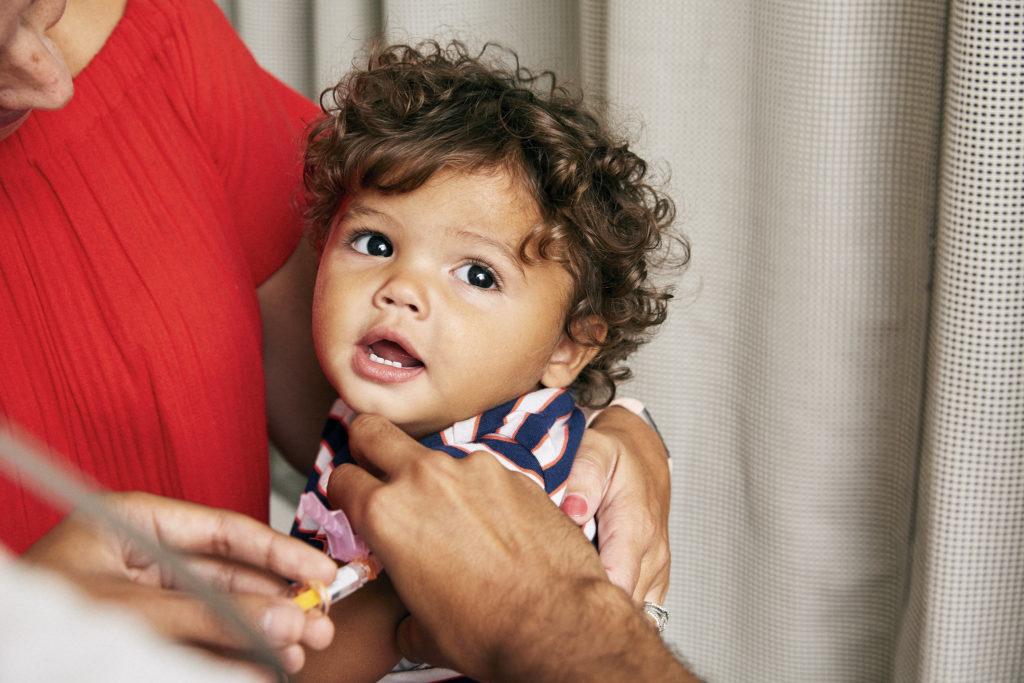More and more parents in the U.S. are choosing to raise gender neutral babies. They use gender neutral words and pronouns for their children, and sometimes don’t disclose what’s in their babies’ diapers except to a very close circle of friends. These children are often called “theybies”—neither boys nor girls.
Whether or not you are making this choice for your own children, it’s important to understand their reasoning and how to support them. Here are five ways to show up for theybies and their parents.

#1: Remember that the intention is liberation.
Parents who choose not to gender their children are trying to carve out space for them to be their full selves, unencumbered by gender expectations that are oh so pervasive in our gendered world. They do not want their child’s genitals or chromosomes to dictate what should play with or how they are treated by others. These parents want their children to get the opportunity to grow up to be the truest versions of themselves possible, and this is one of the ways they are trying to make that happen.
Many studies have shown that children absorb gender stereotypes at a very young age, and that these implicit expectations are damaging to their self-expression and self-confidence.
I sometimes hear people critiquing parent’s choices to use gender-neutral pronouns for their children as a way to force their own ideologies onto their kids. But isn’t the ideology of “girl” or “boy” even more constraining?
One parent I interviewed explained that one of the reasons she chose to use they/them pronouns for her child is to protect her baby from her own internalized gender expectations. She wanted to build a relationship with her baby just as they are, without subconsciously putting “boy” or “girl” assumptions onto them.
Regardless of your own choices, it is important to remember that their children’s freedom is at the forefront of the “theybies” movement.
#2: Your effort matters more than always getting it right.
Intention matters. People would rather know that you are trying to use the correct words in relation to them and their children than remove yourself from their community because you are afraid to make a mistake or feel uncomfortable. A good disclaimer is this: “I really respect your choice around using gender-neutral pronouns for __________. I’m not used to using these pronouns so I may sometimes make mistakes, but I am dedicated to learning this new way, and I want to stay close to your family.”
Organizations like GLSEN also have great resources for practicing using gender neutral language.
#3: Help them educate others.
All of the parents raising theybies I spoke with expressed to me that spend a lot of time and energy educating their families and extended communities. They are essentially taking on the work of retraining people’s deeply internalized expectations of gender, one community at a time.
Their children are at the forefront of this fight. It’s a lot for them to carry on their shoulders. As their community members, we can share the load of helping them educate others around the difference between sex and gender, how to use gender neutral pronouns and why raising gender creative children is so awesome.
Try throwing them a theybie shower, complete with educational materials and fun games like pin the tail on the gender unicorn. When a stranger says something—“are they a boy or a girl?”—respond with “they are neither, they’re just themselves.” Field the reaction or follow-up questions so that the child or their parent doesn’t have to. Buy them gender affirming clothes like this adorable onesie or these cool pronouns pins. And ask them how else they want to be supported by you.
#4: Examine your own experience of gender.
All of us were hit with implicit or explicit expectations around gender at a very young age. Whether or not we lived up to those expectations, they inhibited some of our expressions of our true selves.
One way we can heal from our conditioning and also show up for our gender creative community is to examine what those messages were that came at us as children. Were you one of the boys who was bullied for not being “boy” enough? Or a girl who gravitated away from math and science and towards the humanities? Do you remember the first time you noticed boys and girls doing different things? How did that feel?
For those of us who have intense emotional reactions to people using gender-neutral words for their kids, we need to ask ourselves: what happened to us in our childhood that makes us have such a strong reaction to their choices? Why do I feel so strongly that children belong in one of two boxes? Anywhere on the gender spectrum you felt as a child was totally, completely perfect.
We often subconsciously relate to others the way we were related to as kids. Better understanding our own conditioning around gender will help us know ourselves more and position us to be better allies for the theybies in our lives.
#5: Respect everyone’s parenting choices, and remember that culture is not universal.
Parenting is the hardest job on the planet, and all parents deserve love and a pat on the back. (A massage would be nice, too.) Remember that each parent is making the best decisions they can for their children, and respect their choices.
It’s also important to be aware that all of us are products of time, place, and culture. There are many cultures around the world, in the past and the present, which accept and celebrate the presence of more than two genders.
We have a lot to learn. Let’s learn together.





